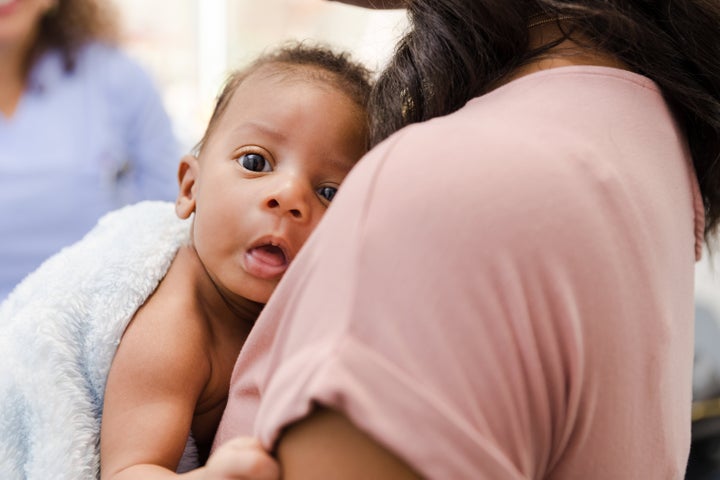
Some newborn health tests are “limited and not fit-for-purpose” for Black, Asian and ethnic minority babies, according to the NHS Race and Health Observatory, which has called for an immediate revision to such assessments.
A commissioned review, undertaken by Sheffield Hallam University, highlighted a number of “reliability concerns” around three neonatal tests and perinatal practices – the Apgar score and the detection of cyanosis and jaundice.
The Apgar score is a quick observation test used to assess babies minutes after birth. It was developed in 1952 and based on White European babies.
Based on a score of one to 10, with a high Apgar score indicating good health, the assessments are used as standard by healthcare professionals regardless of a baby’s skin tone and can give misleading scores.
Some of the guidance, for example, suggests a baby’s skin should be “pink all over”.
Lauren Clarke, from Nottingham, said within hours of giving birth to her son, Jaxson, it was clear that “things were being missed” and noted incorrectly on paperwork, as her son’s eyes were yellow and bloodshot.
“We repeatedly questioned Jaxson’s skin tone due to jaundice for the first four days, but each time our concerns were ignored,” said Clarke, whose comments where included in the new report.
“I was readmitted with an infection, and it was only at this point that Jaxson’s jaundice was picked up by a midwife.
“His levels were so high that he should have immediately had a blood transfusion due to the possible long term affects from jaundice.”
The mum said her son was taken away from her, mid-breastfeeding, for treatment. He had to have a lumbar puncture and then blood tests every hour to check if his bilirubin levels were coming down, but they continued to rise.
“We spent a further five days in hospital for Jaxson to be treated with light therapy and antibiotics,” she recalled. “This was obviously not how we were expecting to spend our first few weeks as a new family.”
The review calls for an immediate update of maternity guidelines that refer to assessments by skin colour and the increased use of screening tool devices, including oximeters and bilirubinometers.
It also said urgent research is needed which focuses on enhancing the reliability of these tools, especially for darker skinned babies.
The report uncovered inconsistencies in understanding and training regarding skin colour in neonatal examinations.
Several maternal health policies referred to terms such as pink, blue, pale or pallor in reference to neonatal skin, with no reference to alternative descriptions for Black, Asian and ethnic minority babies.
Interviews showed many healthcare professionals were uncertain how to apply the Apgar score in Black, Asian and ethnic minority newborns, which led to them adapting the score in their own way.
Chief executive of the NHS Race and Health Observatory, Dr Habib Naqvi, said: “We need to address the limitations in visual examinations of newborns, such as Apgar scores, where the assessment of skin colour can potentially disadvantage Black, Asian and ethnic minority babies with darker skin.
“The results from this initial review highlight the bias that can be inherent in healthcare interventions and assessments and lead to inaccurate assessments, late diagnosis and poorer outcomes for diverse communities.”
The report also found racism and bias was another issue at play, with some women feeling silenced within the healthcare system. Some felt dismissed, ignored, or belittled, while others feared raising concerns due to worries over being labelled as “difficult” or “too much trouble”.
Co-chair of the Observatory’s maternal working group, Professor Jacqueline Dunkley-Bent, said the findings show that “we have much to do to ensure that women, babies and diverse people of colour receive the same healthcare, and have the same childbirth outcomes and experiences as those who receive the best”.
A Department of Health and Social Care (DHSC) spokesperson told HuffPost UK: “While the NHS is already one of the safest places to give birth in the world, we are absolutely clear that maternity care must be of the same high standard for everyone.
“NHS England has published guidance for local maternity systems, supported by £6.8 million, focusing on actions to reduce disparities for women and babies from ethnic minorities and those living in the most deprived areas.
“We also set up the Maternity Disparities Taskforce which brings together experts from across the health system, government departments and the voluntary sector to explore and consider evidence-based interventions to tackle maternal disparities.”